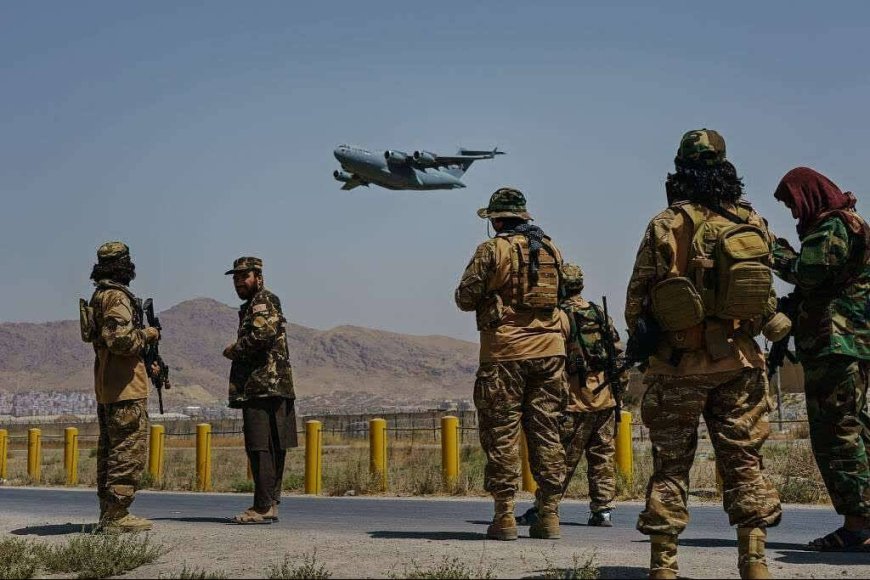Two Years Later: The Complex Path to Power and the Uncertain Political Future of the Taliban in Afghanistan
Two Years Later: The Complex Path to Power and the Uncertain Political Future of the Taliban in Afghanistan

On September 27th, the anniversary of the US's disgraceful withdrawal from Afghanistan, the war-torn nation's name evokes a sense of gloom. Despite a tumultuous history marred by civil war, this Asian country seems destined to transition from sorrow to a more promising future. This article delves into the detailed account of the Taliban's rise to power, highlighting the complex dynamics that have shaped Afghanistan's modern socio-political landscape. Additionally, it explores the challenges the Taliban faces in governing the impoverished nation and the necessity of incorporating intellectuals and inclusivity in shaping the country's political future.
The Taliban's Rise to Power
The Taliban's ascent to power in Afghanistan can be traced back to the 9/11 attacks, which occurred shortly after the suspected assassination of Ahmad Shah Massoud, a legendary national Afghan figure who posed a significant obstacle to the Taliban's complete control.
The world witnessed how the United States and the West, contributing to the rise of the Taliban by assisting Pakistan's spy agency (ISI), found themselves grappling with a formidable force they underestimated. Afghanistan has consistently acted as a breeding ground for Takfiri movements, raising questions about the root causes behind this phenomenon.
The Two Previous Stints in Power
The Taliban has previously held power in Afghanistan. In 1996, their main rival was the former Mujahideen forces led by Burhanuddin Rabbani, who controlled only a fraction of the country. However, their reign ended less than four years later with the US-led invasion following the dubious September 11th attacks. Notably, this period witnessed the destruction of a significant part of Afghanistan's cultural heritage due to the Taliban's prohibition of sculptures, namely the destruction of the Buddha statue in Bamiyan Province.
Subsequently, the US attempted to westernize the Muslim nation, with the presence of NATO military occupiers. However, despite the efforts of leaders like Ahmad Karzai and Ashraf Ghani, foreign interference and the exploitation of Afghanistan's resources hampered the government's ability to effectively address all internal affairs.
The Withdrawal of the United States and the Taliban's Second Rise
In 2020, the unexpected assassination of Ayman al-Zawahiri, the leader of al-Qaeda, at the residence of Sirajuddin Haqqani, one of the Taliban's leaders, strained the relationship between the US and the Taliban. This event transformed the Taliban into an anti-American and anti-ISIS force, leading to America's eventual withdrawal and paving the way for the Taliban's return to power in 2021.
Notably, Afghanistan had operated under the sovereignty approved by the United States for two decades, implementing a version of democracy desired by the US. The escape of Ashraf Ghani, with strong indications of a close relationship with America, raises questions about the underlying dynamics of this crisis.
The Political Future and Challenges Ahead
Speculation abounds regarding the political future of the Taliban. While the Taliban's ideology has evolved compared to 2001, aligning with global conditions, the movement still faces significant challenges in governing various sectors such as the economy, culture, and education.
The absence of intellectual leadership within the Taliban is a pressing concern. To address this, the Afghan nation, comprising both Shia and Sunni Muslims, should draw upon their collective intelligence and historical ties with the Iranian nation and the axis of resistance. By fostering relative security and reestablishing long-standing relationships, the vacuum of intellectual leadership within the Taliban administration can be addressed.
The recent political developments in Afghanistan have showcased the catastrophic results of US intervention in the Middle East. However, the survival of Afghan sovereignty hinges on considering the voices and opinions of the Afghan people. The Taliban must recognize the significance of public sentiment in all governmental affairs, thereby ensuring a more inclusive and democratic decision-making process. As Afghanistan navigates its path forward, the emergence of intellectual leadership and the reconciliation between Sunnis and Shiites will play pivotal roles in shaping a stable and prosperous future for the nation.













































